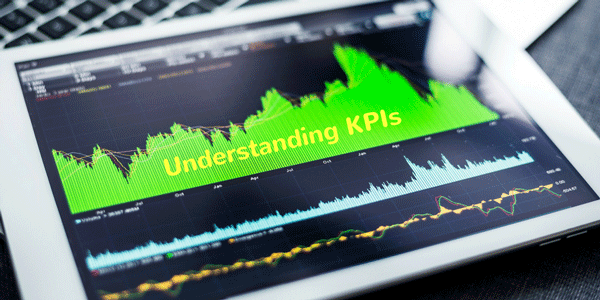Small business owners always have a pulse on where they have been, where they are now, and where they are going. In order to improve this journey along the way, key performance indicators (KPIs) are essential to providing an actionable blueprint. If your business has yet to embrace KPIs, now is the time to learn how the right metrics can help you grow your business.
Choosing the Right KPIs for Your Business
In his HubSpot blog “How to Choose the Right KPIs for Your Business,” Jesse Mawhinney asks businesses to get specific. KPIs mean nothing if they aren’t relevant to your business.
First, what can KPIs be applied to? If you can quantify something in terms of measurement, you can work to improve it. In other words, KPIs are quantifiable measurements (or data points) used to gauge an organization’s performance relative to a defined goal.
What you decide to measure is completely up to you and your business goals. Maybe it’s increasing sales, boosting your ROI, or improving customer service. These all seem like broad goals, right? This is where KPIs come in to provide more specific and useful goal posts. As an example, if your goal is to boost sales, your KPIs should measure a variety of things like site traffic, conversion rates, and daily sales. Now, zoom in even more, measuring CRO through prices, abandoned shopping carts, and other related aspects.
Similarly, site traffic encompasses click through rates, traffic sources, shares, and bounces. And what does “customer service improvement” actually mean? Things like call times are effective KPIs that can help you better understand how you are doing.
How Many KPIs Do You Need to Track?
Selecting too many KPIs is a fruitless exercise. Instead, the author recommends picking between 4-10 key KPIs that matter most to your business. Your stage of growth relates to this selection, where start-ups focus on validation metrics where long-established companies may rely more on things like customer lifetime value.
Along these same lines, every industry is different. While a SaaS company may need a cost per acquisition KPI, an online company may look at unique visitors, while retail brick and mortar shops will likely measure sales per square foot.
If your company is focused on your digital strategy, you are not alone. As the hottest goal out there these days, Matthew Goulart outlines “Five KPIs You Should Be Monitoring To Ensure Your Digital Strategy Is Working” in his Forbes article, quickly summarized below:
Brand engagement
As a bottom line, you need to know what your customers are doing on your website. This tells you everything, down to who is new, who is returning, what they want, and if you are delivering.
The KPIs necessary to tell this story are:
- Number of unique visitors
- Number of return visitors
- Time spent on the website
- Popular pages (and how customers got there)
- Number of people registering for something
Traffic sources
What is driving people to your site? Here are the main traffic sources to get a read on the behavior:
- Direct: Visitors type the URL into their browser
- Referral: Visitors arrive to your site after clicking a link on another website
- Organic: Visitors find and arrive to your website via a search engine
- Campaign: Visitors come here via a campaign or advertisement
Landing Page Conversions
Does your landing page help you meet your goals like sales or downloads? KPIs can help track this, especially through Google Analytics that looks at organic and paid search traffic. Then, with conversion rate information you can see what pages best seal the deal. If you need help with conversions, rely on A/B testing and try revising things like your CTA, written content, and testimonials.
Inbound Marketing ROI
According to this article, marketers should use the KPI with this formula: ROI = (sales growth – marketing investment) / marketing investment. In other words, you should only spend money on what works.
Social Media Traffic
Various KPIs can measure the success of your social media strategy including these goalposts taken directly from the article:
- Number of leads generated from each social media channel
- Number of conversions generated from each social media channel
- Number of customers reaching out to your company via each social media channel
- Percentage of traffic coming from social media channels
Lagging vs. Leading Indicators
Once your company defines its important KPIs, pay attention to the lagging and leading indicators. Lagging indicators measure what has already happened, such as previous month sales. These output measurements are important to know how you fared. Equally critical are leading indicators (i.e. traffic, conversion rates) that focus on inputs, progress, and goal projections. While lagging indicators are easier to measure (the numbers are already there), it’s important to look ahead at the leading indicators. For example, are you positioned to meet your goals with everything that’s in place? If not, it’s time to up your chances.
Which KPIs are Working for Your Business?
What KPIs do you rely on in your own business? What has given you the most insight to run your business more effectively? We’d love to hear it!
This article is made possible by Checksforless.com. For more than 35 years, Checksforless.com has provided over 500,000 businesses with high quality business checks, deposit slips, and other banking supplies with easy ordering and fast production times; all at the guaranteed lowest price in the nation. Our discount business checks are easily customizable and compatible with over 4,500 software programs including QuickBooks® and Peachtree/Sage®. Email or call us toll-free at 800-245-5775.
References:
